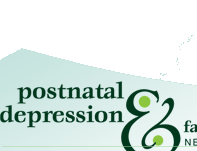 |

Tricyclic Antidepressants
This section is designed to inform professionals.
(Consumers, see Fact sheet on Tricyclic Antidepressants)
Examples include Amitriptyline (Amitrip), Nortriptyline (Norpress), Doxepin (Anten), Trimipramine (Surmontil, Tripress), Desipramine (Pertofran), Dothiepin (Dopress), Imipramine (Tofranil) and Clomipramine (Clopress).
- Tricyclics have been used widely since the 1960’s to treat depression and anxiety.
- As a consequence there is more information on their use on pregnancy and the postpartum than any other antidepressant medication.
- They have more side effects than the newer antidepressant medications which can lead to them being less well tolerated during pregnancy and breastfeeding.
- They are toxic in overdose so should be used with caution in women with suicidal thinking.
- Tricyclics inhibit the neuronal uptake of noradrenaline (NA), dopamine and serotonin (5-HT) into presynaptic nerve terminals. By blocking the major route of neurotransmitter removal, tricyclics lead to increased concentrations of monoamines in the synaptic cleft, resulting in antidepressant effects.
Use in Pregnancy
Category C (except Imipramine which is D)
- A meta-analysis of 14 studies did not demonstrate any increased risk of congenital malformations, miscarriage, preterm delivery or growth restriction (1)
- Comparison of 80 children postnatally failed to reveal any evidence of a reduction in IQ scores, language development or of behavioural problems (2).
- There is less evidence on the safety of the newer tricyclics such as Dothiepin.
- During pregnancy, use of a tricyclic with less anticholinergic type side effects such as Nortriptyline is preferable.
- In recent years there has been less use of tricyclics because of their toxicity in overdose and side effects.
- Recent emerging concerns regarding use of SSRIs in pregnancy with Neonatal Adaptation Syndrome and a possible association with Persistent Pulmonary Hypertension of the Newborn (PPHN) are likely to lead to increased prescription by clinicians (See SSRI medications for further information).
Use in Lactation
Category L2
- Tricyclics are the most widely studied antidepressants in breast-feeding.
- Studies suggest that all tricyclics may be detectable in breast milk in concentrations similar to that in maternal plasma. (3)
- Several studies have failed to detect Nortriptyline at measurable levels in the serum of breastfed babies.
- There has been a case report of an infant of a mother being treated with Doxepin being sedated, limp and with shallow respirations. These signs improved with the cessation of breastfeeding (4).
- Despite such rare reports of problems the tricyclics are generally considered safe for breastfeeding.
- There have been a number of small studies examining the potential long term effects on infants which suggest there is no discernible effect on the development of children exposed to tricyclics in breast milk (5,6)..
References
(1). Altshuler Ll, Cohen L, Szuba MP et al. Pharmacologic management of psychiatric illness during pregnancy: dilemmas and guidelines. American Journal of Psychiatry 1996; 153: 592-606
(2) McElhatton P, Garbis HM, Elefant E et al. the outcome of pregnancy in 689 women exposed to therapeutic doses of antidepressants. A collaborative study of the European Network of Teratology Information services. Reproductive toxicology 1996
10: 285-294
(3) Nulman I, Rovet J, Stewart DE et al. Neurodevelopment of children exposed in utero to antidepressant drugs. New England Journal of Medicine 1997; 336:258-262
(4) Matheson I, Pande H & Alersten AP. Respiratory depression caused by N-Desmethyl Doxepin in breast milk. Lancet 1985:2:1124
(5)Buist A, Janson H; Effect of exposure to Dothiepin and northiaden in breast milk on child development British Journal of Psychiatry 1995; 167: 370-373
(6)Yoshida K., Smith B, Craggs M & Kumar C: Investigation of pharmokinetics and of possible adverse effects in infants exposed to tricyclic antidepressants in breast milk. Journal of Affective Disorders 1996 43 225-237
|
 |





